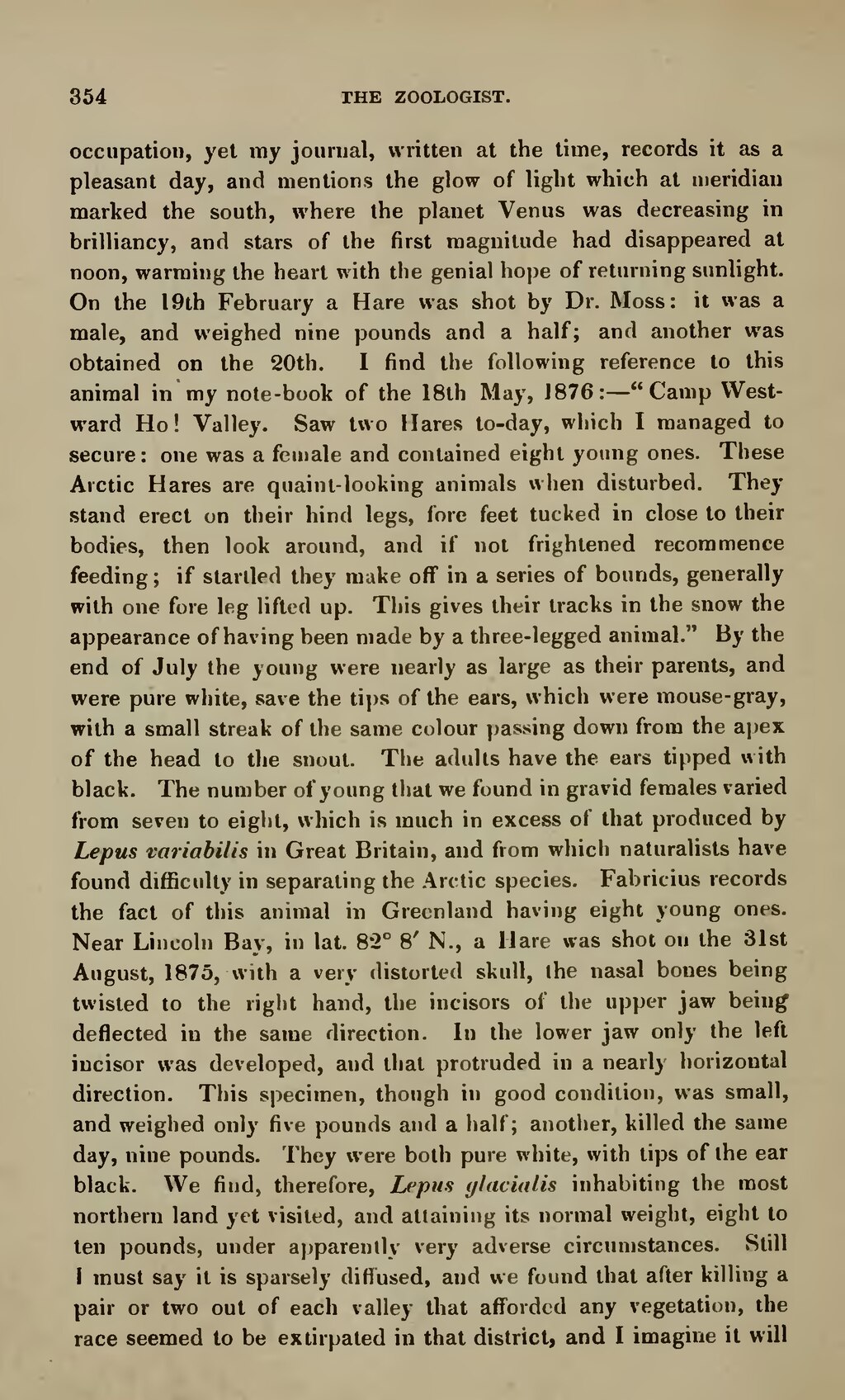occupation, yet my journal, written at the time, records it as a pleasant day, and mentions the glow of light which at meridian marked the south, where the planet Venus was decreasing in brilliancy, and stars of the first magnitude had disappeared at noon, warming the heart with the genial hope of returning sunlight. On the 19th February a Hare was shot by Dr. Moss: it was a male, and weighed nine pounds and a half; and another was obtained on the 20th. I find the following reference to this animal in my note-book of the 18th May, 1876:—"Camp Westward Ho! Valley. Saw two Hares to-day, which I managed to secure: one was a female and contained eight young ones. These Arctic Hares are quaint-looking animals when disturbed. They stand erect on their hind legs, fore feet tucked in close to their bodies, then look around, and if not frightened recommence feeding; if startled they make off in a series of bounds, generally with one fore leg lifted up. This gives their tracks in the snow the appearance of having been made by a three-legged animal." By the end of July the young were nearly as large as their parents, and were pure white, save the tips of the ears, which were mouse-gray, with a small streak of the same colour passing down from the apex of the head to the snout. The adults have the ears tipped with black. The number of young that we found in gravid females varied from seven to eight, which is much in excess of that produced by Lepus variabilis in Great Britain, and from which naturalists have found difficulty in separating the Arctic species. Fabricius records the fact of this animal in Greenland having eight young ones. Near Lincoln Bay, in lat. 82° 8' N., a Hare was shot on the 31st August, 1875, with a very distorted skull, the nasal bones being twisted to the right hand, the incisors of the upper jaw being deflected in the same direction. In the lower jaw only the left incisor was developed, and that protruded in a nearly horizontal direction. This specimen, though in good condition, was small, and weighed only five pounds and a half; another, killed the same day, nine pounds. They were both pure white, with tips of the ear black. We find, therefore, Lepus glacialis inhabiting the most northern land yet visited, and attaining its normal weight, eight to ten pounds, under apparency very adverse circumstances. Still I must say it is sparsely diffused, and we found that after killing a pair or two out of each valley that afforded any vegetation, the race seemed to be extirpated in that district, and I imagine it will
